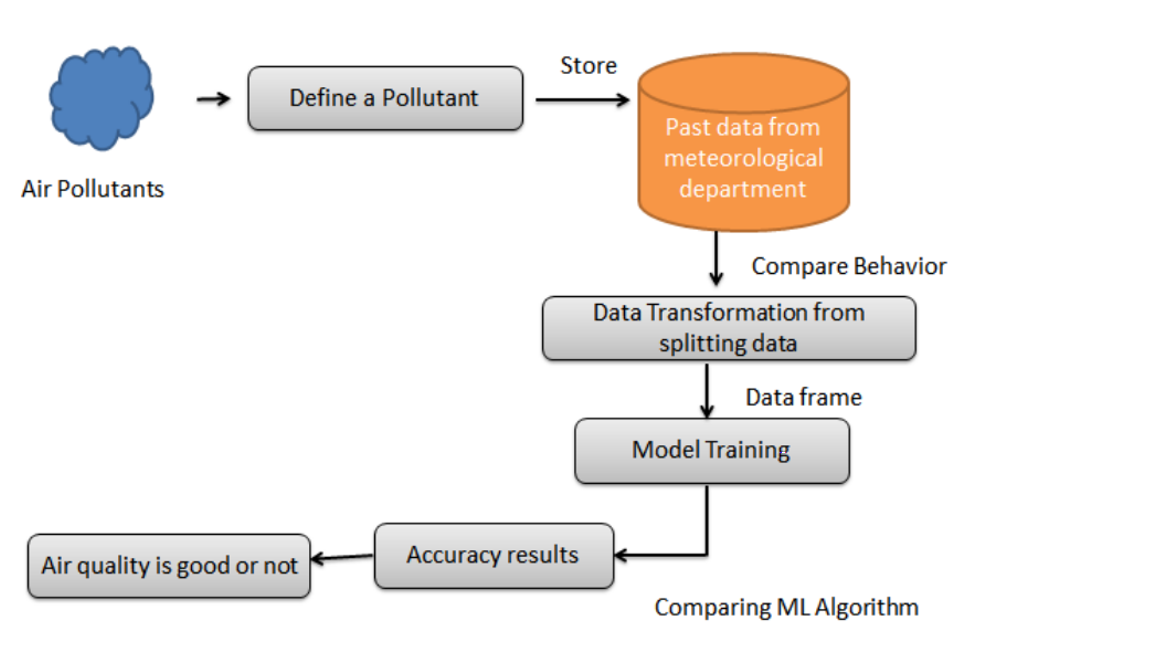A Smart IoT enabled Air Pollution Detector using Machine Learning
Objective
In this paper we have proposed the application of Internet of Things and Machine learning so that air pollution can be monitored within future smart cities. An IoT sensor array is connected to the system, which can analyze the data using machine learning algorithms.
Abstract
The regulation of air pollutant levels is rapidly increasing and it is one of the most important tasks for the governments of developing countries, especially India. It is important that people know what the level of pollution in their surroundings is and take a step towards fighting against it. The meteorological and traffic factors, burning of fossil fuels, industrial parameters such as power plant emissions play significant roles in air pollution. Among all the particulate matter (PM) that determines the quality of the air. When its level is high in the air, it causes serious issues on people’s health. Hence, controlling it by constantly keeping a check on its level in the air is important. This can be found by using the machine learning algorithms are XG Boost, CAT Boost, LGBM, Random Forest, Logistic Regression.
Keywords: Machine Learning algorithms, Air pollution, LGBM, CAT Boost.
NOTE: Without the concern of our team, please don't submit to the college. This Abstract varies based on student requirements.
Block Diagram

Specifications
HARDWARE SPECIFICATIONS:
- Processor: I3/Intel
- Processor RAM: 4GB (min)
- Hard Disk: 128 GB
- Key Board: Standard Windows Keyboard
- Mouse: Two or Three Button Mouse
- Monitor: Any
SOFTWARE SPECIFICATIONS:
- Operating System: Windows 7+
- Server-side Script: Python 3.6+
- IDE: PyCharm
- Libraries Used: Pandas, Numpy, sklearn, Flask, Seaborn, TensorFlow.
Learning Outcomes
- Importance of Supervised & Unsupervised Learning.
- Scope of air pollution prediction
- Significance of air pollution prediction
- Importance of PyCharm IDE.
- Process of debugging a code.
- The problem with imbalanced dataset.
- Benefits of SMOTE technique.
- Input and Output modules
- How test the project based on user inputs and observe the output
- Project Development Skills:
- Problem analyzing skills.
- Problem solving skills.
- Creativity and imaginary skills.
- Programming skills.
- Deployment.
- Testing skills.
- Debugging skills.
- Project presentation skills.
- Thesis writing skills.





 Paper Publishing
Paper Publishing
